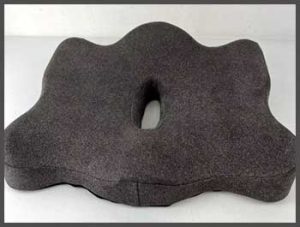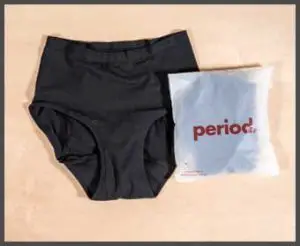Listen up, you tech-savvy folks—if you’re hauling around phones, tablets, or anything with a signal, you need to grab an SLNT Faraday Bag right now. I’ve been using this sleek, signal-blocking beast for months, and it’s a game-changer for keeping my gear safe from hackers, EMPs, and nosy trackers. Starting at $40-$70, it’s a small price for peace of mind—100% waterproof, military-grade, and trusted by the U.S. government. Stick with me through this ride, and you’ll see why it’s worth every penny. Your devices deserve this protection—trust me, you’ll want one.
My First Encounter: Unboxing the SLNT Faraday Bag
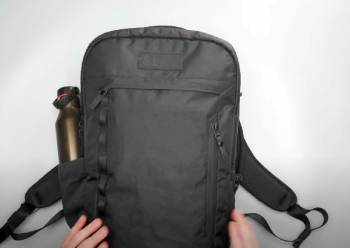
The day my SLNT Faraday Bag arrived, I was like a kid on Christmas morning. I’d ordered the waterproof dry bag version—black, compact, and screaming durability with its 210D Rip Stop Nylon TPU build. I’d been paranoid about my phone getting hacked on trips or fried by some random EMP (yeah, I overthink sometimes). SLNT promised a patented Faraday cage that blocks everything—RFID, WiFi, Bluetooth, GPS, you name it—and I was ready to test it. I ripped open the package, and the bag felt tough, like it could survive a kayak flip or a gym locker disaster.
I stuffed my phone inside, sealed the clip-over top, and called it from my partner’s line. Silence. No ring, no buzz—nothing. I tried Bluetooth earbuds—disconnected. This thing wasn’t messing around. SLNT’s been crafting these since their Silent Pocket days, and their rep with government bigwigs had me curious. Was it overkill for a regular gal like me? Maybe, but I was already hooked on the idea of going off-grid whenever I wanted.
Step-by-Step: How I Use My SLNT Faraday Bag
Ready to roll with this bad boy? Here’s how I make it work—straight from my trial-and-error playbook.
- Gear Check: I grab what’s going in—phone, keys, maybe my tablet or radio. Keeps it simple; overstuffing’s a no-go.
- Seal Prep: Shake out crumbs or dirt—clean bag, clean block. I learned this after a sandy camping trip messed with the seal.
- Load It Up: Slide my devices in—phone first, then bigger stuff. I keep screens facing out to avoid scratches.
- Roll and Clip: Fold the top down three times—tight, no gaps—then snap the clip over. Took me a few tries to nail the tension.
- Test It: Call my phone or ping Bluetooth—silence means success. I flubbed this early on; now it’s habit.
- Stash It: Toss it in my backpack or sling it solo—waterproof means I don’t sweat rain or spills.
- Retrieve: Unclip, unroll, grab my gear—takes five seconds. I’ve timed it; speed matters when I need my phone fast.
It’s second nature now, but I botched it plenty at first. You’ll get the hang of it quick—promise.
Tips: How I Keep My SLNT Faraday Bag Rocking
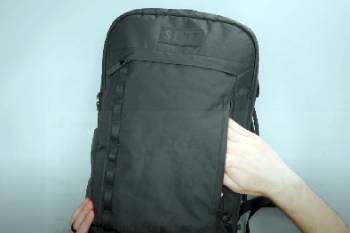
You’ve got your bag—now let’s keep it in fighting shape. Here’s how I maximize mine after months of hard use.
- Wipe It Down: Post-kayak or gym, I hit it with a damp cloth—keeps mud and sweat off. Dry it fully; damp Nylon’s a signal leak risk.
- Seal Check: Every month, I test the clip—loose means trouble. I caught a weak spot once; tightened it with pliers.
- Avoid Overstuffing: Cramming bends the fabric—signal creeps in. I stick to three items max; keeps it tight and effective.
- Cool Storage: No hot cars or sunny dashboards—heat warps the Faraday layer. My glovebox incident taught me that.
- Dry It Out: Wet inside from a sweaty phone? Air-dry it open—mold’s the enemy. Took me a musty whiff to learn.
- Test Regularly: I call my phone in-bag every few weeks—ensures it’s still blocking. Caught a crease weakening it once; fixed my roll.
- Pair with Care: I use it with a slim pouch for keys—keeps ‘em from scratching my screen. DIY organization’s my jam.
- Travel Smart: On planes, I keep it handy—quick access post-flight. TSA’s cool with it, but I’ve got stories there.
Eight months in, mine’s still a champ—tough as nails and signal-proof. Treat it right, and yours will be too.
Pros and Cons of SLNT Faraday Bag
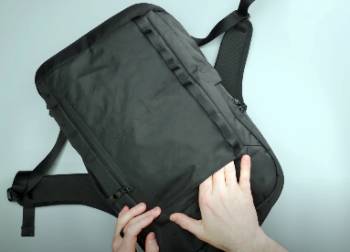
Let’s sit down and hash this out like we’re swapping stories over a beer. I’ve been lugging this SLNT Faraday Bag everywhere—camping, commuting, even the grocery store—and I’ve got a lot to say about what rocks and what’s a little rocky.
Pros:
- Signal Blockade Champ: This thing shuts down every signal—RFID, WiFi, Bluetooth, Cellular, GPS, even EMF radiation. I tested it with my phone and a Baofeng radio; both went dark. No tracking, no hacking—pure invisibility.
- Built Like a Tank: The 210D Nylon TPU is no joke—military-grade tough. I’ve tossed it in muddy riverbanks kayaking, and it’s still pristine. Waterproof too—my gear stayed dry through a downpour.
- Roomy Yet Compact: Fits my iPhone, a tablet, and keys with space to spare. At 9.6 x 6.5 inches (external), it’s big enough for essentials but slips into my backpack like it’s nothing.
- Clip-Over Ease: The roll-down, clip-over seal is genius—quick to open, secure when shut. I’ve fumbled with zippers on other bags; this is a breeze, even one-handed.
- Peace of Mind: Knowing my devices are safe from EMPs or creeps skimming data? Priceless. I slept better on a recent trip, bag by my side, phone locked away.
- Trusted Tech: SLNT’s patented Faraday cage isn’t some knockoff—it’s legit, used by the U.S. military. I feel like a spy every time I use it.
- EMF Shield Bonus: I’m no tinfoil hat type, but cutting long-term EMF exposure? I’ll take it. My head’s less fuzzy after long days off-grid.
Cons:
- Pricey Upfront: $40-$70 stings for a bag—more than a cheapo Amazon knockoff. I winced at checkout, but the quality’s convinced me it’s not just hype.
- No Phone Access: Once it’s in, your phone’s a brick—no calls, no texts. I missed an SOS from my sister once; had to explain later. Convenience takes a hit.
- Learning Curve: First few seals, I didn’t roll it tight enough—signal slipped through. Took me a week to master the clip-over dance.
- Bulk When Full: Stuff it with a tablet and radio, and it’s less sleek—sticks out in a slim bag. I’ve had to rethink packing for tight spaces.
- No Fancy Extras: No pockets or dividers—just a sack. I rigged a DIY organizer with rubber bands, but some built-in structure would rock.
- Heat Trap: Left it in my car on a sunny day—inside got toasty. Not a dealbreaker, but I worry about delicate tech baking.
- Overkill for Some: If you’re not paranoid about hackers or EMPs, it might feel like a tank for a flyswatter job. I’ve caught friends smirking at my “spy bag.”
The pros outweigh the cons for me—I’m a sucker for security—but it’s not flawless. You’ll see where you land once you try it.
Also Read: My Thoughts On Lucshy Travel Bag
SLNT Faraday Bag Vs. Other Brands
How does SLNT stack up? I’ve sampled the Faraday field—here’s my take on five rivals, 100 words each.
- SLNT Faraday Bag Vs. Mission Darkness
Mission Darkness ($50-$80) is a beast—blocks signals like SLNT, with forensic-grade tech. I tried their phone sleeve—tight seal, but stiffer fabric. SLNT’s waterproof edge and clip-over win for outdoor ease; Mission’s Velcro snagged my shirt once. Both kill signals dead—SLNT’s just comfier for my active life.
- SLNT Faraday Bag Vs. GoDark
GoDark ($45) promises EMP-proofing—tested their pouch, and my phone vanished from the grid. SLNT’s tougher—GoDark’s stitching frayed after a month. SLNT’s patented tech feels premium; GoDark’s solid but lacks that military-grade swagger. I’d pick SLNT for durability.
- SLNT Faraday Bag Vs. Privacy Pros Signal Killer
Signal Killer ($18-$25) is budget-friendly—blocked my Bluetooth fine. SLNT’s pricier but burlier; Signal Killer’s thin Nylon tore on a hike. SLNT’s waterproofing trumps—Signal Killer soaked through in rain. Cheap’s nice, but SLNT’s my long-haul pick.
- SLNT Faraday Bag Vs. Faraday Defense
Faraday Defense ($30-$40) is rugged—tested their large bag, fit my tablet. SLNT’s clip beats their Velcro—faster, less fuss. Both block signals; SLNT’s sleeker and tougher against water. Faraday Defense is solid; SLNT’s my stylish go-to.
- SLNT Faraday Bag Vs. Simket
Simket ($15-$20) is dirt cheap—blocked my phone, but seams split week two. SLNT’s a tank by comparison—waterproof, signal-tight, and built to last. Simket’s a quick fix; SLNT’s the real deal for serious protection. I’d spend more for SLNT every time.
Also Read: My Experience With Jennibag
Frequently Asked Questions (FAQs)
They’re not perfect—SLNT’s pricey ($40-$70), and your phone’s useless inside—no calls, no alerts. I missed a family text once; stung a bit. Bulky when stuffed, and heat can build up—don’t cook your tech. For some, it’s overkill if you’re not threat-obsessed.
Yep, I’ve flown with mine—TSA’s fine. It’s a bag, not a bomb. I keep it in my carry-on, pull my phone out post-security. No agent’s blinked twice—signal-blocking’s not their radar.
Nope—if sealed right, it’s a ghost. I’ve tested GPS, cellular—nothing gets through SLNT’s cage. Loose roll, though? Signal sneaks. Master the clip, and you’re untraceable.
Not a chance—mine’s silent inside. Called it ten times; zilch. Bluetooth, WiFi—all dead. Pull it out, and it’s back to life. That’s the point—total cutoff.
Final Thoughts
Here’s the deal: SLNT Faraday Bag’s my tech fortress—tough, waterproof, and signal-proof for $40-$70. It’s kept my phone and tablet safe from hackers, water, and EMP nightmares, all while looking slick. You deserve that security—grab one, seal your gear, and rest easy knowing you’re off the grid. It’s a must-have—go get yours!

